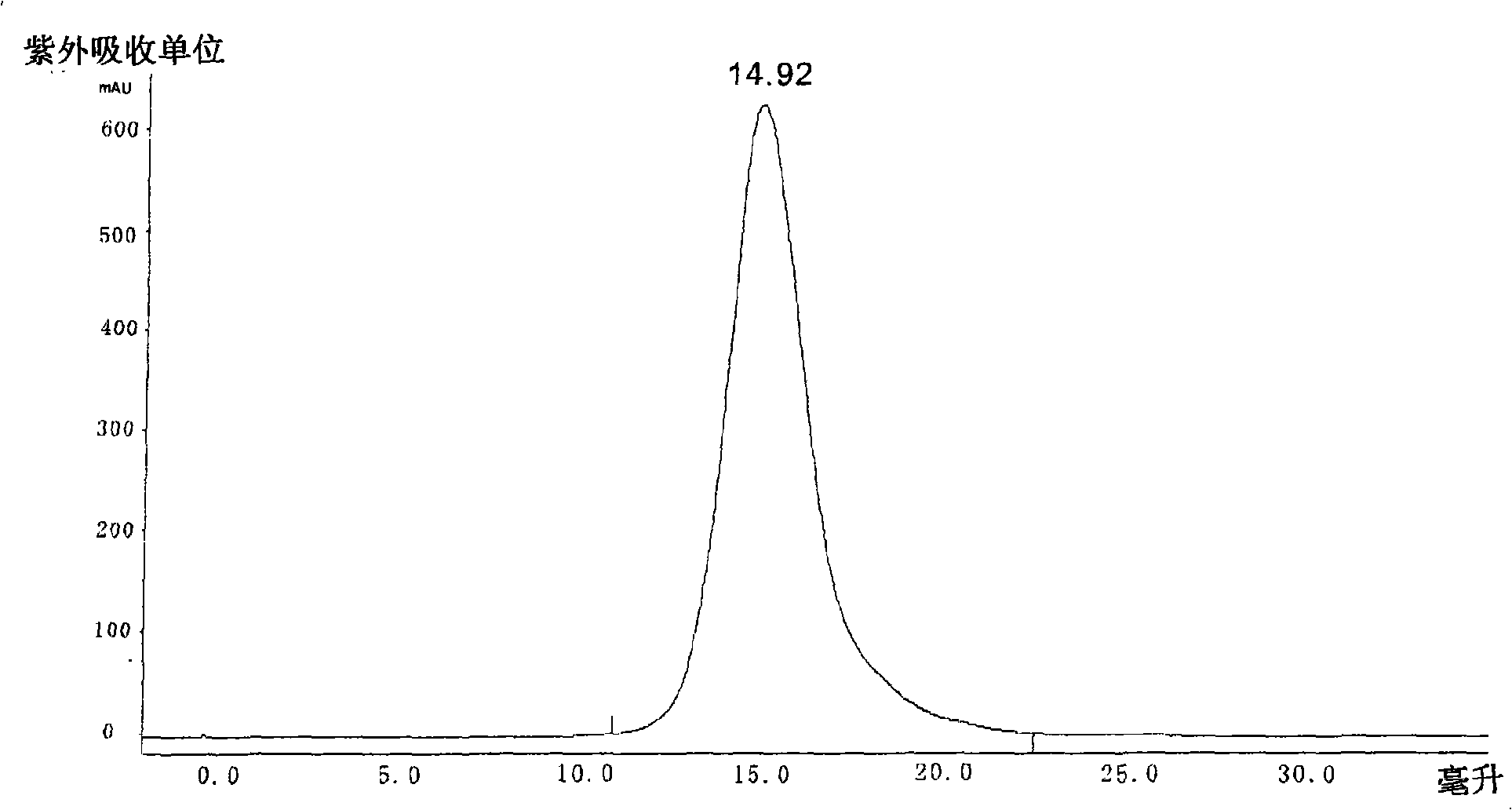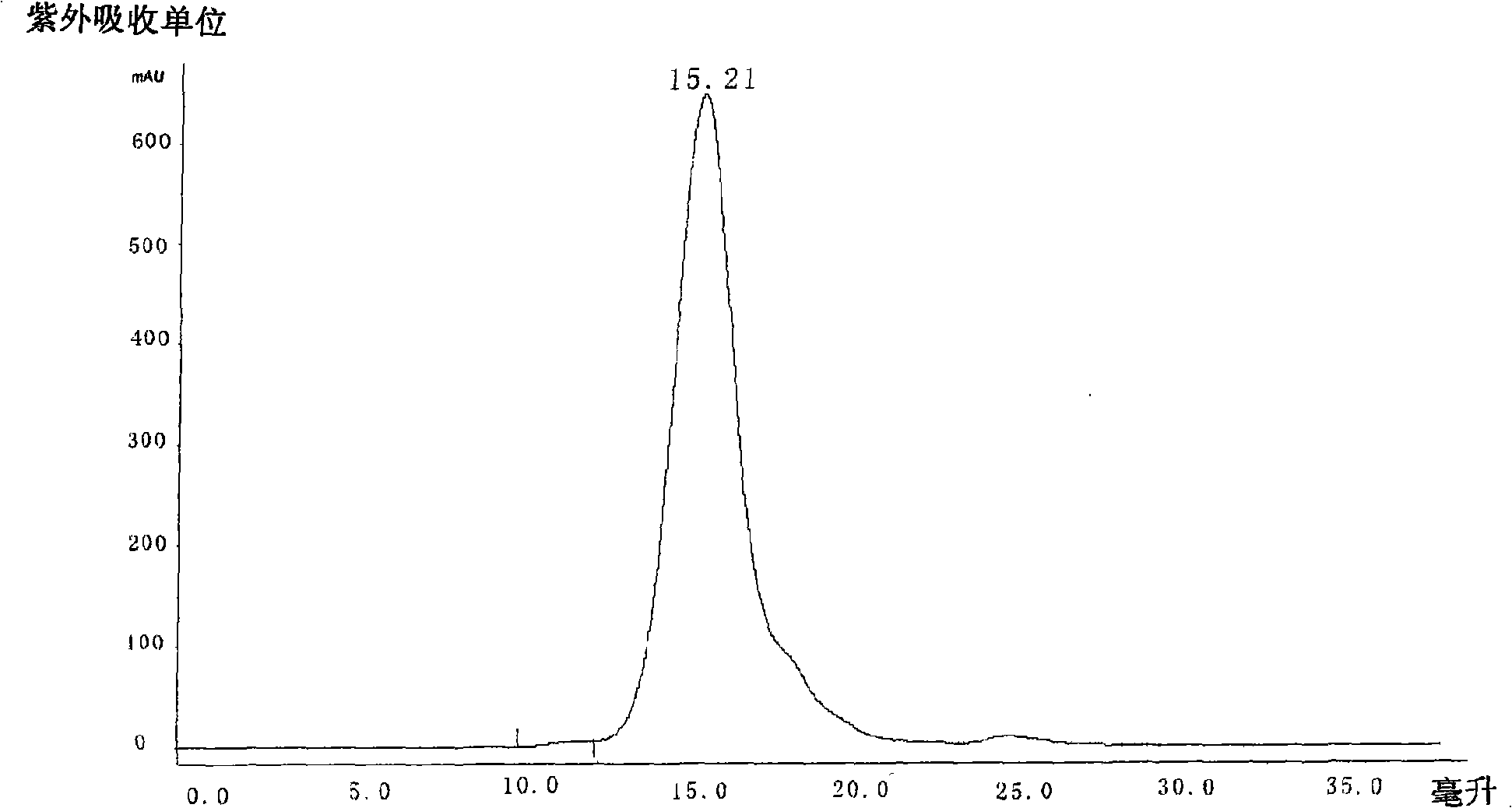Collagen protein and collagen polypeptides, preparation thereof and applications
A collagen and collagen polypeptide technology, which is applied in the fields of peptide/protein components, animal/human proteins, specific peptides, etc., to achieve the effects of considerable economic benefits, low cost, and simple process equipment
- Summary
- Abstract
- Description
- Claims
- Application Information
AI Technical Summary
Problems solved by technology
Method used
Image
Examples
Embodiment 1
[0044] Example 1 Preparation of Collagen and Polypeptide Using Tilapia Scale as Raw Material
[0045] Wash 100 grams of decalcified tilapia scales with water, add deionized water at 1000°C and heat up to 85°C for 30 minutes, then cool down to 45°C, adjust the pH value to 8.0, add 3 grams of alkaline protease, degrade for 2 hours, and then re-degrade under the same conditions Add 4 grams of neutral protease, react for 2 hours, the scales are all dissolved, then raise the temperature to 90°C, keep warm for 15 to 30 minutes to inactivate the enzyme, add an appropriate amount of flocculant diatomite and activated carbon (mixed at 1:1) to settle for 8 Take the supernatant directly; the supernatant is distilled under reduced pressure at a vacuum degree of 0.06-0.10Mpa and a temperature of 40-65°C, and finally spray-dried to obtain solid protein polypeptide powder.
[0046] After determination, among them: Hydroxyproline content: 9.4%; Hydroxylysine, 1.4%.
Embodiment 2
[0047] Example 2 Preparation of Collagen and Polypeptide Using Tilapia Skin as Raw Material
[0048] Weigh 100g of dried fish skin into a 1000ml beaker, wash at room temperature until the pH value is about 7, heat to 80°C for 30 minutes, cool to 50°C, adjust the pH value to 8, add 2.5 grams of alkaline protease, and react for 3 hours ; Adjust the temperature to 45°C, add 4 grams of neutral protease, and stir at a constant temperature for 3 hours; heat to 85°C for 15 minutes to inactivate the enzyme. Add an appropriate amount of flocculant diatomaceous earth and activated carbon (mixed at 1:2) to settle for 8 hours, and take the supernatant directly. The supernatant is distilled under reduced pressure at a vacuum degree of 0.06-0.10Mpa and a temperature of 40-65°C, and finally spray-dried to obtain solid protein polypeptide powder.
[0049] Product testing results: Hydroxyproline content: 9.38%; Hydroxylysine, 1.31%.
Embodiment 3
[0050] Example 3 Preparation of Collagen and Polypeptides Using Cod Skin as a Raw Material
[0051] Weigh 100g of dried cod skin into a 1000ml beaker, wash at room temperature until the pH value is about 7, heat to 80°C for 30 minutes, cool to 50°C, adjust the pH value to 8, add 4 grams of trypsin respectively, and react 6 Hours; adjust the temperature to 45°C, add 3 grams of 1398 protease, and stir at a constant temperature for 5 hours; heat to 85°C for 15 minutes to inactivate the enzyme.
[0052] After flocculation and precipitation filtration, the filtrate is distilled under reduced pressure at about 50°C, and finally spray-dried to obtain fish skin collagen polypeptide powder.
[0053] Product testing results: Hydroxyproline content: 7.3%; Hydroxylysine, 1.3%
PUM
 Login to View More
Login to View More Abstract
Description
Claims
Application Information
 Login to View More
Login to View More - R&D
- Intellectual Property
- Life Sciences
- Materials
- Tech Scout
- Unparalleled Data Quality
- Higher Quality Content
- 60% Fewer Hallucinations
Browse by: Latest US Patents, China's latest patents, Technical Efficacy Thesaurus, Application Domain, Technology Topic, Popular Technical Reports.
© 2025 PatSnap. All rights reserved.Legal|Privacy policy|Modern Slavery Act Transparency Statement|Sitemap|About US| Contact US: help@patsnap.com



